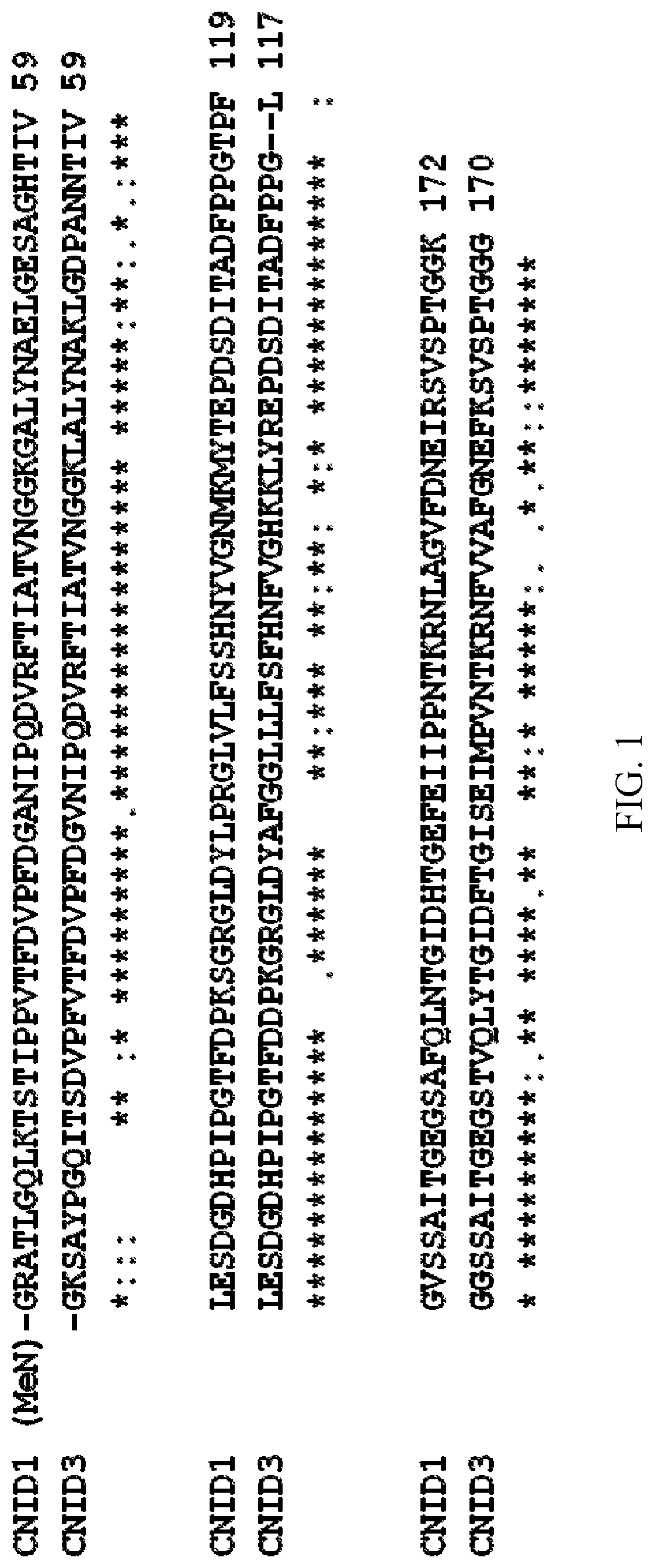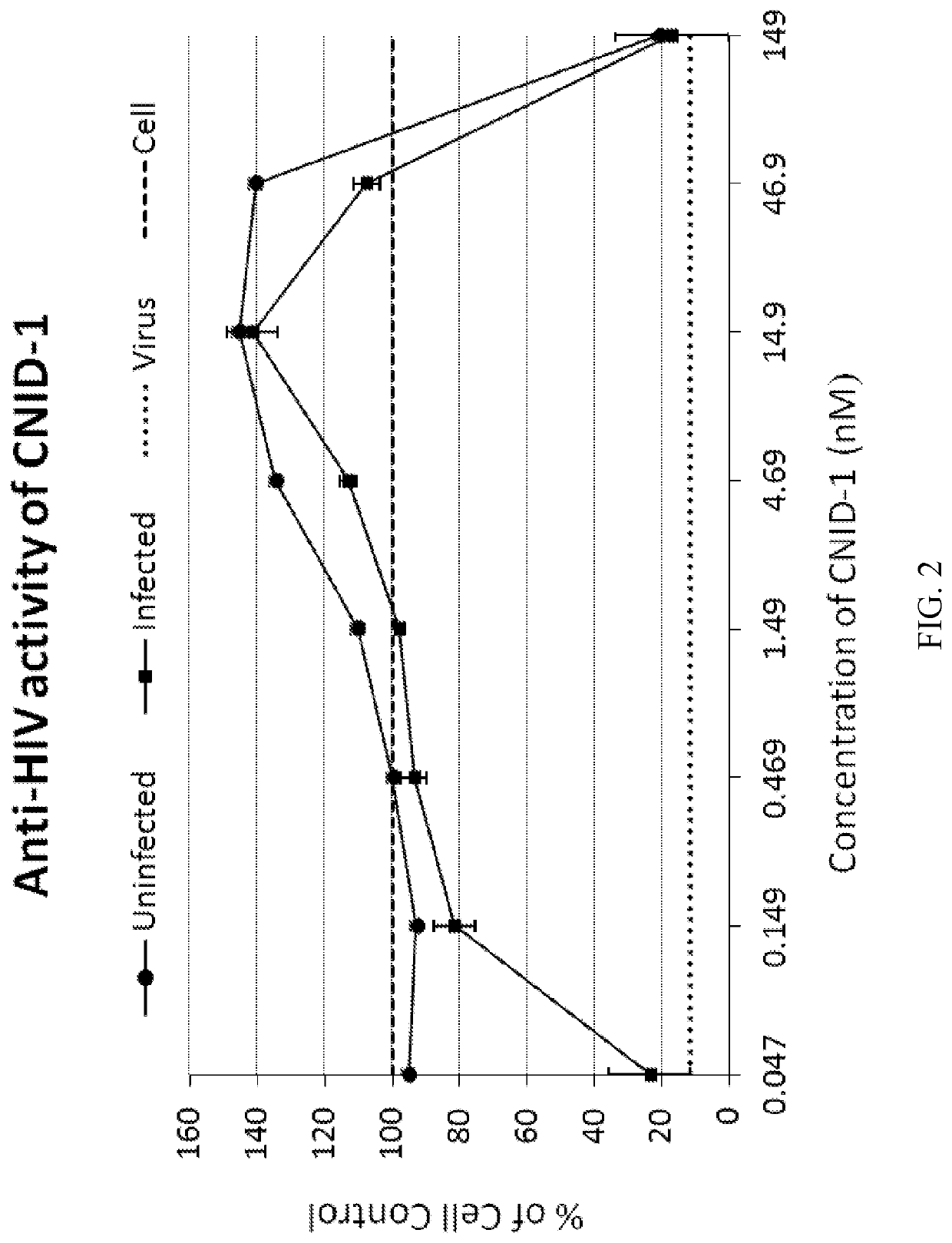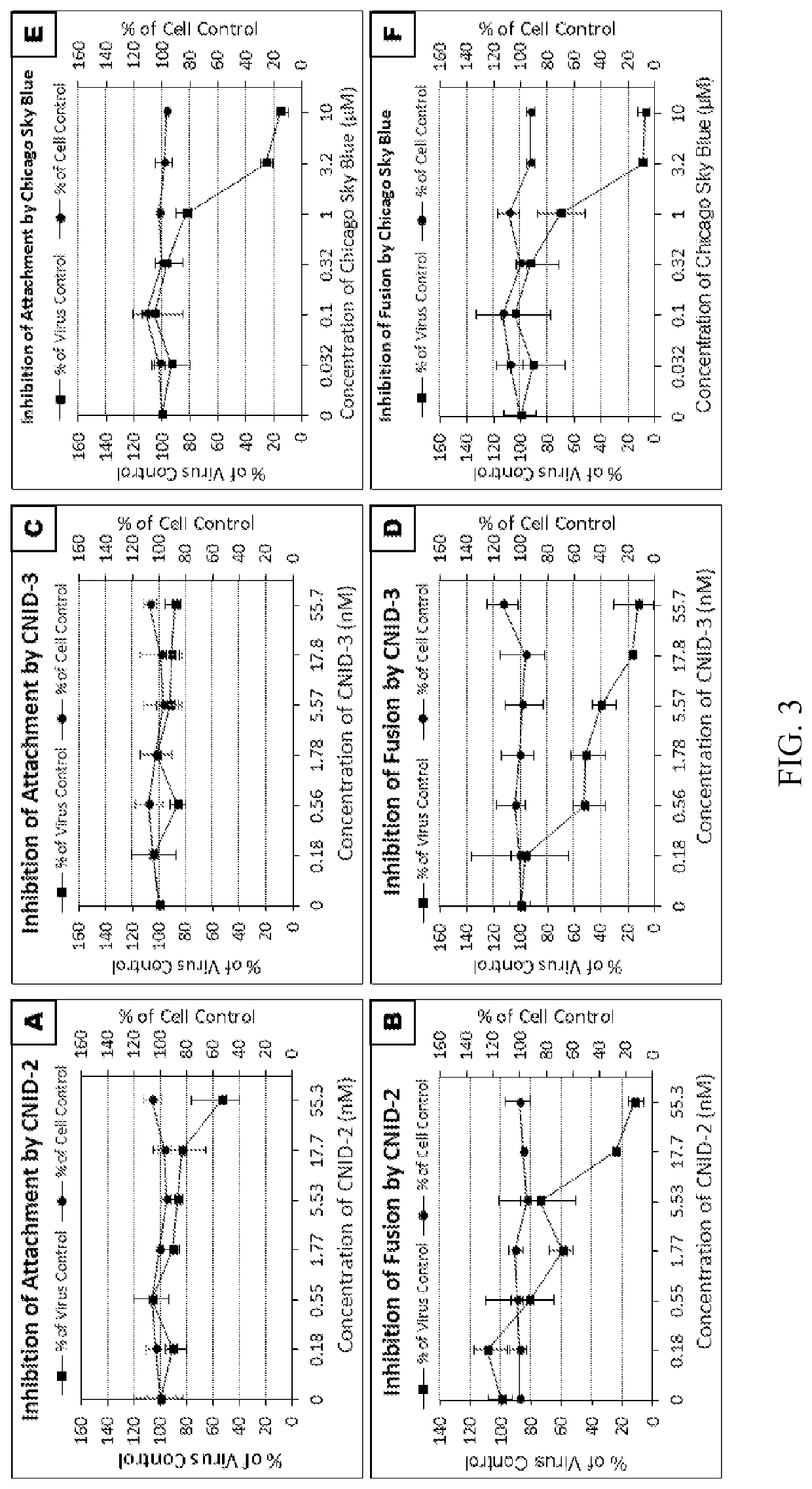Anti-viral cnidarins
a technology of cnidarins and antiviral antibodies, applied in the field of antiviral cnidarins, can solve the problems of ineffective use of arvs for preventing hiv infection, hurdles in anti-aids treatment, and the epidemic of human immunodeficiency virus (hiv)/aids that remains a global health problem of unprecedented dimensions
- Summary
- Abstract
- Description
- Claims
- Application Information
AI Technical Summary
Benefits of technology
Problems solved by technology
Method used
Image
Examples
example 1
[0124]This example illustrates the materials and methods for Examples 2-6.
[0125]Synthecium Collection and Classification
[0126]The soft coral Synthecium sp. (phylum Cnidaria, class Hydrozoa, order Thecata also called Leptothecata, family Syntheciidae) was collected at a depth of 10 m on the northern sides of Cumberland Strait, Wessel Islands, N.T., Australia. Sample collection and identification was done by the Australian Institute of Marine Sciences (AIMS) under contract to the National Cancer Institute (National Institutes of Health). A taxonomic voucher specimen (sample number Q66C4766-V) was deposited at the Smithsonian Institution in Suitland, Md. (U.S.A.).
[0127]Extraction and Isolation of CNID-1, -2 and -3
[0128]Fresh frozen Synthecium sp. was ground in the presence of dry ice and first extracted with water followed by a MeOH:CH2Cl2 (1:1) solvent. Both the organic and aqueous extracts were tested for anti-HIV protective properties in the NCI primary anti-HIV screen (Weislow et a...
example 2
[0162]This example illustrates a method of isolating and purifying CNID-1, CNID-2, and CNID-3 from Synthecium sp. and elucidating their amino acid sequences.
[0163]In vitro anti-HIV activity (EC50 of Synthecium sp. (phylum Cnidaria) in a whole-cell assay system for HIV-1-induced cytopathicity. Anti-HIV bioassay-guided fractionation of the extract led to the isolation and purification of a class of three new HIV-inhibitory proteins referred to as cnidarin-1 (CNID-1), cnidarin-2 (CNID-2) and cnidarin-3 (CNID-3) based on their elution profile during purification (i.e. early, middle and late eluting proteins were CNID-1, CNID-2 and CNID-3 respectively). The proteins were purified to homogeneity by the sequential use of ethanol precipitation, ammonium sulphate precipitation and hydrophobic interaction chromatography. The calculated total yields (from 5.68 g of original freeze dried aqueous extract) were 2.0 mg, 1.6 mg and 0.5 mg for CNID-1, CNID-2 and CNID-3 respectively.
[0164]The protein...
example 3
[0170]This example illustrates the anti-viral activity of the cnidarins.
[0171]Anti-HIV activities of cnidarin proteins were initially examined using the T-tropic laboratory strain (HIV-1RF) in CEM-SS cells. All three cnidarin proteins elicited concentration-dependent inhibition of virus-induced cell killing with picomolar EC50 values (Table 1). Of the three cnidarin proteins, CNID-1 was the most potent (FIG. 2).
[0172]
TABLE 1Anti-HIV activities of Cnidarin proteins.CNID-1CNID-2CNID-3(nM)(nM)(nM)VirusTarget CellTropismaEC50CC50aEC50CC50aEC50CC50RFCEM-SST0.08451120.495>4300.114>199Ba-LMacrophageM1.053.569.679.675.684.62ROJOPBMCT3.971448.513561.50155aMean EC50 values were determined from concentration-response curves from eight dilutions of the test agent; assays for HIV-1RF / CEM-SS employed XTT-tetrazolium; HIV-1ROJO were tested in human PBMC cultures by supernatant reverse transcriptase activity; HIV-1Ba-L was tested in human primary macrophage cultures by p24 ELISA assay. AZT was used...
PUM
| Property | Measurement | Unit |
|---|---|---|
| depth | aaaaa | aaaaa |
| pH | aaaaa | aaaaa |
| molecular mass | aaaaa | aaaaa |
Abstract
Description
Claims
Application Information
 Login to View More
Login to View More - R&D
- Intellectual Property
- Life Sciences
- Materials
- Tech Scout
- Unparalleled Data Quality
- Higher Quality Content
- 60% Fewer Hallucinations
Browse by: Latest US Patents, China's latest patents, Technical Efficacy Thesaurus, Application Domain, Technology Topic, Popular Technical Reports.
© 2025 PatSnap. All rights reserved.Legal|Privacy policy|Modern Slavery Act Transparency Statement|Sitemap|About US| Contact US: help@patsnap.com



